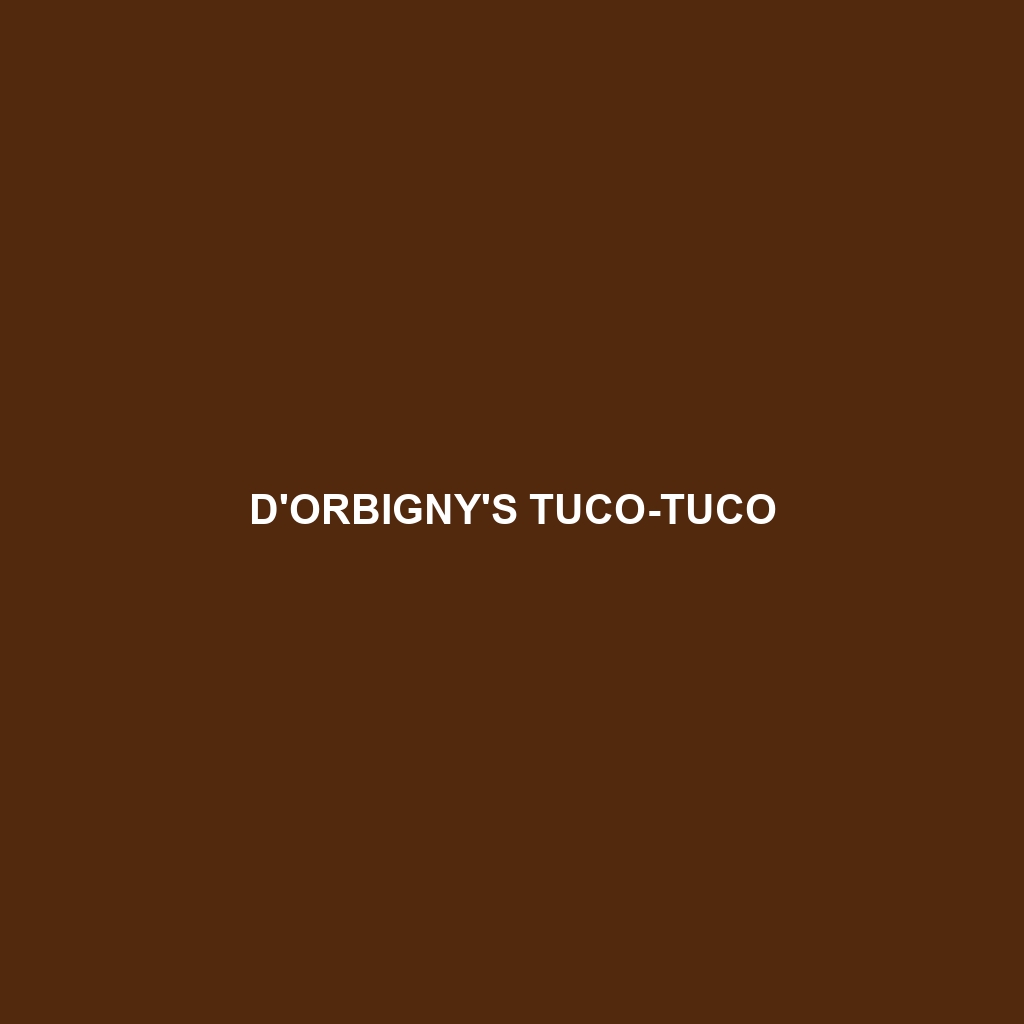D’Orbigny’s Tuco-tuco: Species Description
Common Name: D’Orbigny’s Tuco-tuco
Scientific Name: Ctenomys d’Orbignyi
Habitat
The D’Orbigny’s Tuco-tuco primarily inhabits the grasslands and scrublands of South America, particularly in countries like Argentina, Bolivia, and Paraguay. These rodents are often found in burrows within sandy or loamy soils, which provide suitable conditions for their lifestyle. Their preference for open plains and areas with low vegetation makes them more vulnerable to habitat modification and human encroachment.
Physical Characteristics
D’Orbigny’s Tuco-tuco are medium-sized rodents, typically measuring around 20 to 30 centimeters in length. They are characterized by their robust bodies, short legs, and distinctive fur that ranges from light brown to gray, allowing them to blend into their surroundings. Their coarse fur is complemented by small, elongated heads, and they have prominent incisors that are well-adapted for digging. Their large, webbed feet are especially notable, aiding in their burrowing activities.
Behavior
This species is primarily nocturnal, emerging from their burrows at night to forage for food. D’Orbigny’s Tuco-tuco are social animals, often living in colonies that exhibit complex social structures. They are known to communicate with a variety of vocalizations, signaling alarm or social cues to their group members. Their burrowing behavior can significantly alter the soil structure, which has notable effects on the local ecosystem.
Diet
D’Orbigny’s Tuco-tuco primarily feeds on a herbivorous diet, consisting of roots, tubers, and various grasses. Their strong incisors provide the necessary tools to dig for edible plants underground. Their diet is crucial for maintaining the health of the grassland ecosystem, as they contribute to seed dispersal and soil aeration through their burrowing activities.
Reproduction
The reproductive habits of D’Orbigny’s Tuco-tuco are typically characterized by a breeding season that spans from spring to early summer. Females give birth to a litter of 2 to 6 offspring after a gestation period of about 40 days. The young are altricial at birth and remain dependent on their mothers for several weeks. This breeding strategy helps ensure that populations can recover quickly in favorable environmental conditions.
Conservation Status
Currently, D’Orbigny’s Tuco-tuco is categorized as “Least Concern” by the IUCN Red List; however, they face threats from habitat loss due to agriculture and urbanization. Monitoring their populations is essential to ensure they do not transition to a more critical conservation status.
Interesting Facts
D’Orbigny’s Tuco-tuco is known for its remarkable tunneling capabilities, with individuals capable of creating extensive burrow systems that can extend several meters underground. These burrows not only serve as a refuge from predators but also help regulate their body temperature.
Role in Ecosystem
As burrowing rodents, D’Orbigny’s Tuco-tuco play a significant role in their ecosystem. Their activities contribute to soil aeration and the creation of habitats for other species. Furthermore, they serve as prey for various predators, thus maintaining the trophic balance within their environment.
